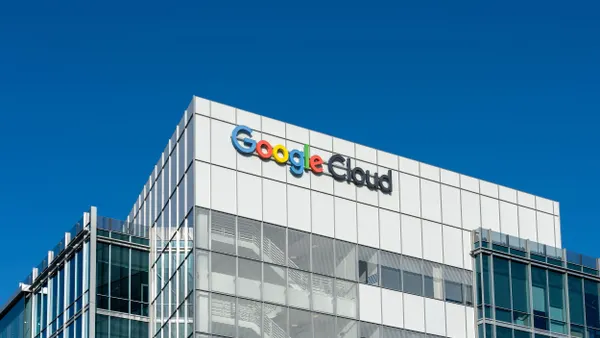For many enterprises, IT has become the very thing it was meant to overcome: a bottleneck. For those relying on outdated architectures, a single change in one system can lead to delays across others. Without streamlined integration, any enhancement can actually slow down progress and increase risk.
Now, legacy infrastructure deficiencies have been compounded due to the emergence of AI—which depends on clean data, real-time access, and scalable architecture. Without a modern, connected ecosystem, AI can’t deliver on its promise. And your IT remains stuck playing catch-up.
What a future-ready ecosystem looks like
A connected ecosystem bridges this gap. Instead of operating as separate, brittle systems, core technologies are unified through APIs, cloud-native platforms, and composable architecture. These components work together to support faster development cycles, improve cross-team collaboration, and increase operational visibility. Teams can reuse digital components like payment modules, authentication systems, or content blocks. This eliminates redundant work and enables more consistent, reliable experiences across channels.
A future-ready ecosystem also provides shared data layers, centralized governance, and flexible orchestration tools that allow business logic to evolve without tearing down what already works. Development teams can rapidly prototype and deploy new services without waiting on backend rewrites. Business teams can access real-time insights without going through IT gatekeepers. Security policies can be applied uniformly across the stack rather than patched on at the edges. And when systems are interoperable by design, IT can focus less on integration workarounds and more on supporting innovation, reducing technical debt, and unlocking faster paths to growth.
AI: The double-edged catalyst
AI further exposes the limitations of legacy IT. Training models, deploying assistants, and generating real-time insights all require clean, well-governed data and scalable infrastructure. Organizations that attempt to plug AI into disjointed systems often find themselves overwhelmed by poor data quality and inconsistent outcomes.
According to McKinsey, while nearly every company is investing in AI, only 1% consider themselves mature in their deployment. And the greatest barriers aren’t always technical. Instead, they’re structural and organizational, which includes problems with fragmented data and systems that don’t talk to each other. A Cisco study found that 81% of organizations admit they struggle with data silos. And fragmentation significantly limits the ability to implement AI operations at scale. Without an integrated infrastructure, AI not only becomes harder to deploy, but also far less effective.
In contrast, in companies with connected ecosystems, AI becomes an enhancement to existing workflows—not an added burden. Whether it’s generating localized content, optimizing operations, or enabling smarter customer interactions, AI thrives when built on a foundation designed for speed, scale, and interoperability.
Case-in-point: Modernizing mining
Take Vale, one of the world’s largest mining companies. Vale operates on several continents and generates massive volumes of data across its supply chain. As the company grew, so did its complexity. As a result, Vale needed a way to connect its systems, teams, and insights into a single, accessible ecosystem. Outdated infrastructure and siloed data stood in the way of continued efficiency gains and real-time decision making at scale.
To meet this challenge, Vale partnered with Bottle Rocket’s Brazilian-based team to develop two key platforms: Integra and Connect. Integra was designed to enable centralized processing and validation of data from multiple sources to ensure data accuracy and consistency across the business. Meanwhile, Connect provided an intuitive digital workspace with customizable dashboards and tools. This meant globally distributed teams could now visualize, share, and act on the data collaboratively.
This connected ecosystem didn’t just improve visibility. Rather, the entire organization became more agile. And this transformation lays the groundwork for future AI-driven capabilities. With standardized, validated data streams and collaborative visibility already in place, Vale is better positioned to integrate machine learning models. With AI, anomaly detection, resource allocation optimization, and predictive maintenance can all be accelerated.
AI can further enhance decision-making by surfacing insights in real time and automating responses to changing operational conditions. This would transform Vale's connected ecosystem into a truly intelligent one. But without the foundational work beforehand, any AI implementation would require costly overhauls, extensive data cleansing, and time-consuming integration projects just for starters.
Agility isn’t an add-on. But it is a game-changer
Agility isn’t something you can bolt on at the end of a project. It must be built into the core of your technology ecosystem. And a connected architecture enables IT to shift from a reactive support function to a strategic driver of business value. Then, companies are better prepared to innovate quickly, respond to market shifts, and integrate technologies like AI without starting from scratch.
Agility isn’t just a technology goal—it’s a proven performance multiplier. According to McKinsey, organizations that embed agility into their operating model see efficiency, customer satisfaction, and employee engagement rise by as much as 30%. These companies also become five to ten times faster at responding to opportunities and are three times more likely to rank in the top performance quartile among peers. Beyond operational speed, agility drives financial impact as well, with many agile organizations reporting a 20% to 30% improvement in financial performance.
But without a connected ecosystem, agility is difficult if not impossible to sustain, because siloed systems and fragmented data slow everything down.
Design for what comes next
Connected ecosystems solve current legacy system problems. But looking forward, it’s more about preparing your company for future opportunities. By designing truly integrated IT systems, organizations position themselves to take full advantage of emerging technology, new business models, and evolving customer expectations.
Partners with deep expertise in ecosystem design and delivery can play a critical role—helping organizations unify their architecture and accelerate innovation. The result? Agility becomes a core capability, not a constant challenge.










